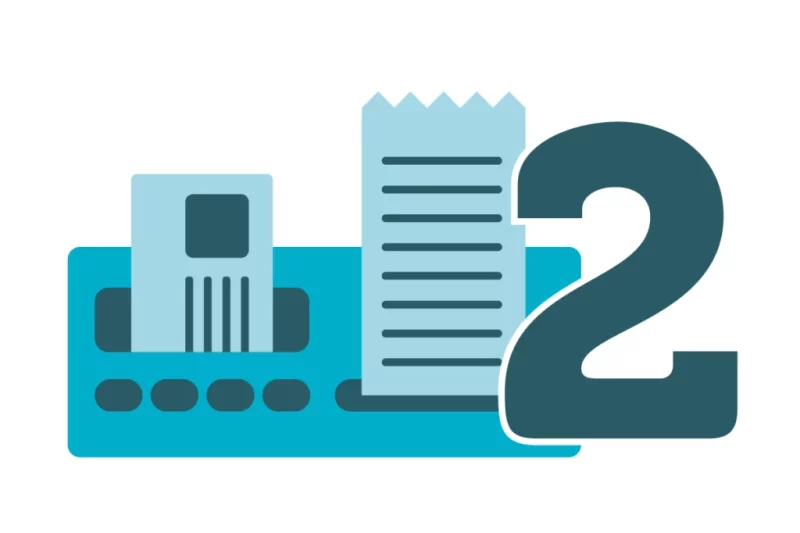In 2025, it’s time for the major retrofit in international transport. A big year for the transport sector, with many changes set to take place. This is the year in which a large part of international transport must be equipped with new tachographs: the Smart Tacho 2. What does this retrofit entail, and what are the benefits? Find out here.
New functions of the Smart Tacho 2
A major transition in the transport world, but why is this switch so important? The Smart Tacho 2 comes with several new features that were missing in the Smart Tacho 1. As a result, the tachograph is not only used to monitor drivers’ driving and rest times. It also serves as an effective control mechanism for cabotage and posting of drivers. Additionally, location tracking and system security have been improved. The tachograph now automatically records border crossings, allows for the registration of loading and unloading activities, provides real-time information on the vehicle’s location, and displays the maximum driving time. The GNSS signal is also better secured, ensuring greater data security.
Introduction of new tachographs
In 2025, the new tachographs must be implemented. This does not yet apply to all vehicles, but it does apply to a large portion of vehicles used for international transport. The following timeline has been established:
- 1 January 2025: Smart Tacho 2 mandatory for all vehicles with an analogue or digital tachograph.
- 19 August 2025: Smart Tacho 2 mandatory for all vehicles equipped with a Smart Tacho 1.
- 1 July 2026: Smart Tacho 2 mandatory for all internationally operating vehicles with a total weight of at least 2,500 kg.
More ease of use for drivers, inspectors, and businesses
Installing new tachographs is, of course, a major logistical challenge. It takes time and money, so business owners may not be too keen on these new regulations. However, the use of the new Smart Tacho 2 can bring significant convenience.
This starts with the drivers. When crossing a national border, they no longer need to stop to change the country code. This saves them time and contributes to more fuel-efficient journeys. Additionally, it is possible to connect a smartphone or the dashboard to the tachograph. This means that operation takes place through familiar interfaces, reducing the risk of errors.
Another major advantage is that the tachograph can be read remotely. This is beneficial not only for enforcement officers, who can now check maximum driving times in this way, but also for fleet managers. Tachograph data can be downloaded remotely and securely transmitted to a dedicated storage system. This ensures that the data remains protected from unauthorized access while being accessible to authorized personnel for analysis.
As a result, managing a large fleet becomes significantly easier.
Technical challenges
A major retrofit like the one in 2025 never comes without challenges. Reports have already surfaced about error messages that drivers and fleet managers have no control over. For example, an unexpected error message may appear during an inspection. European inspection services are aware of these technical issues. There is a high chance that these minor bugs will soon be fixed through software updates.
Installing the new Smart Tacho 2 is also a technical challenge. It must be done carefully, preferably by a technician who already has experience with this new system. This ensures that the tachograph is properly configured and correctly linked to the dashboard.
Therefore, make sure to involve the right experts for this major retrofit in 2025, so your fleet is fully prepared for this new era.
Other changes for international transport
The introduction of the Smart Tacho 2 is the biggest change that transport companies need to prepare for in 2025. However, there is another important change affecting both drivers and transport companies.
As of 1 January 2025, drivers will be required to provide 56 days of data during an inspection. This is a significant increase from the previous 28-day requirement. Fortunately, with a maximum storage capacity of 6 to 9 months, this should not pose a major issue.
However, it’s important to note that the Smart Tacho 2 has limited storage for country codes. It can only store 112 entries for the start and end of a country. Therefore, transport companies should consider this when managing tachograph data and ensure that the tachograph is read out in a timely manner.
The Smart Tacho 2 as a transition tachograph
Some technical glitches already indicate that the Smart Tacho 2 is not yet fully optimized, but these issues will be addressed in the coming period. However, the Smart Tacho 2 is still not the ideal tachograph. Work is ongoing on a version that includes the ONSMA signal. This signal is designed to provide additional security for the satellite connection.
This will not directly affect the driving experience of the driver or the ease of monitoring for fleet managers. It is primarily an additional security measure that will eventually be implemented. Therefore, it’s highly likely that the introduction of the Smart Tacho 2 will not be the final retrofit in the transport sector.
